Essential Guide to Cleaning Your Commercial Ice Machine
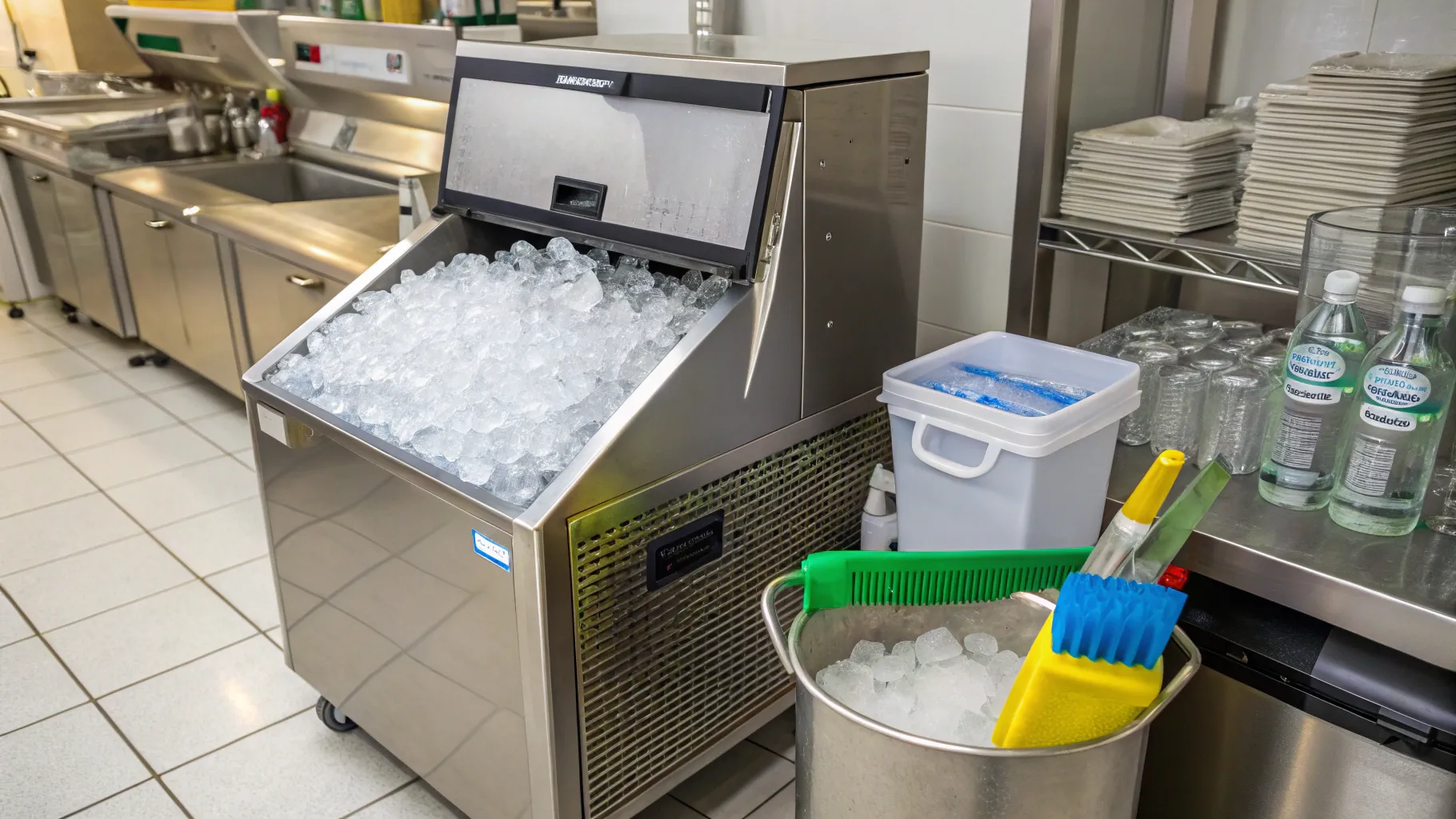
Keeping your commercial ice machine clean is crucial for both performance and health reasons. In this guide, we’ll explore the fundamental steps for cleaning an ice machine, the importance of regular maintenance, and the potential consequences of neglecting this essential task.
Introduction to Ice Machine Cleaning
Cleaning a commercial ice machine is not just a maintenance task; it’s essential for ensuring the machine operates efficiently and produces safe, clean ice. Regular cleaning helps to prevent mineral buildup, which can significantly affect the performance of the machine. Without proper cleaning, ice machines can become breeding grounds for mold and bacteria, posing health risks to customers and employees alike.
The Importance of Regular Cleaning
Every ice machine has its own unique cleaning requirements, but a general rule of thumb is to clean the machine every six months. For establishments that produce a significant amount of ice, like breweries or bakeries, cleaning every 90 days is advisable. This frequent maintenance helps to prevent the accumulation of calcium and other deposits that can hinder the machine’s functionality.
Preparing for the Cleaning Process
Before diving into the cleaning process, it’s crucial to prepare adequately. This preparation ensures that the cleaning goes smoothly and that the machine is restored to optimal functionality afterwards.
Gather Necessary Supplies
- Ice machine cleaner fluid (nickel-safe)
- Soft nylon brush
- Bleach solution
- Cleaning rags
- Timer
Turn Off the Machine
Begin by turning off the ice machine and unplugging it for safety. This step prevents any accidental activation during the cleaning process.
Remove Ice and Water
Empty the ice bin and drain any remaining water from the machine. This step will allow for a thorough cleaning without any obstructions.
Understanding Ice Machine Cleaner Fluid
Using the right cleaning fluid is vital in the maintenance of an ice machine. A nickel-safe ice machine cleaner fluid is specifically formulated to remove mineral deposits and scale without damaging the internal components.
How to Use the Cleaner
Pour approximately two to three ounces of the cleaner into the water distribution trap. Then, activate the cleaning cycle to let the solution circulate through the system. This process typically takes about 25 minutes. It’s crucial not to exceed this time, as prolonged exposure can damage the machine’s nickel plating.
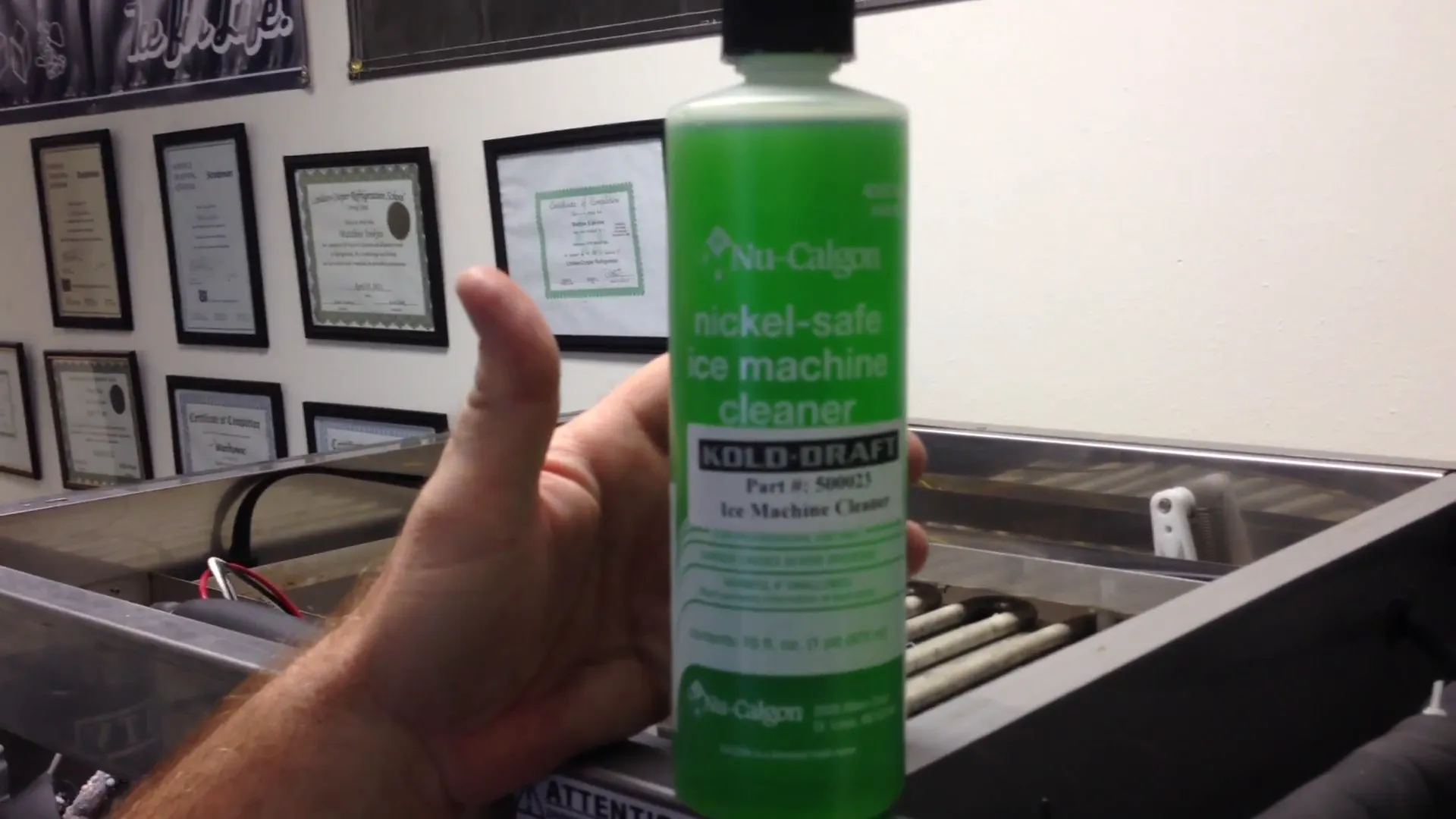
The Risks of Over-Cleaning
While cleanliness is key, over-cleaning can be detrimental. Running the cleaner for too long can corrode the nickel plating on the evaporator, leading to irreversible damage.
Understanding the Risks
Over-cleaning not only risks damaging the evaporator but also leads to costly repairs or even the need for a complete replacement of the machine. Regular, scheduled cleaning is essential, but it should always adhere to the recommended times.
Visual Inspection: What to Look For
A visual inspection is an important part of the cleaning process. By checking for specific signs of wear and buildup, operators can address issues before they escalate.
Signs of Mineral Buildup
- Calcium deposits on the evaporator and pump
- Discoloration or scaling inside the machine
- Reduced ice production
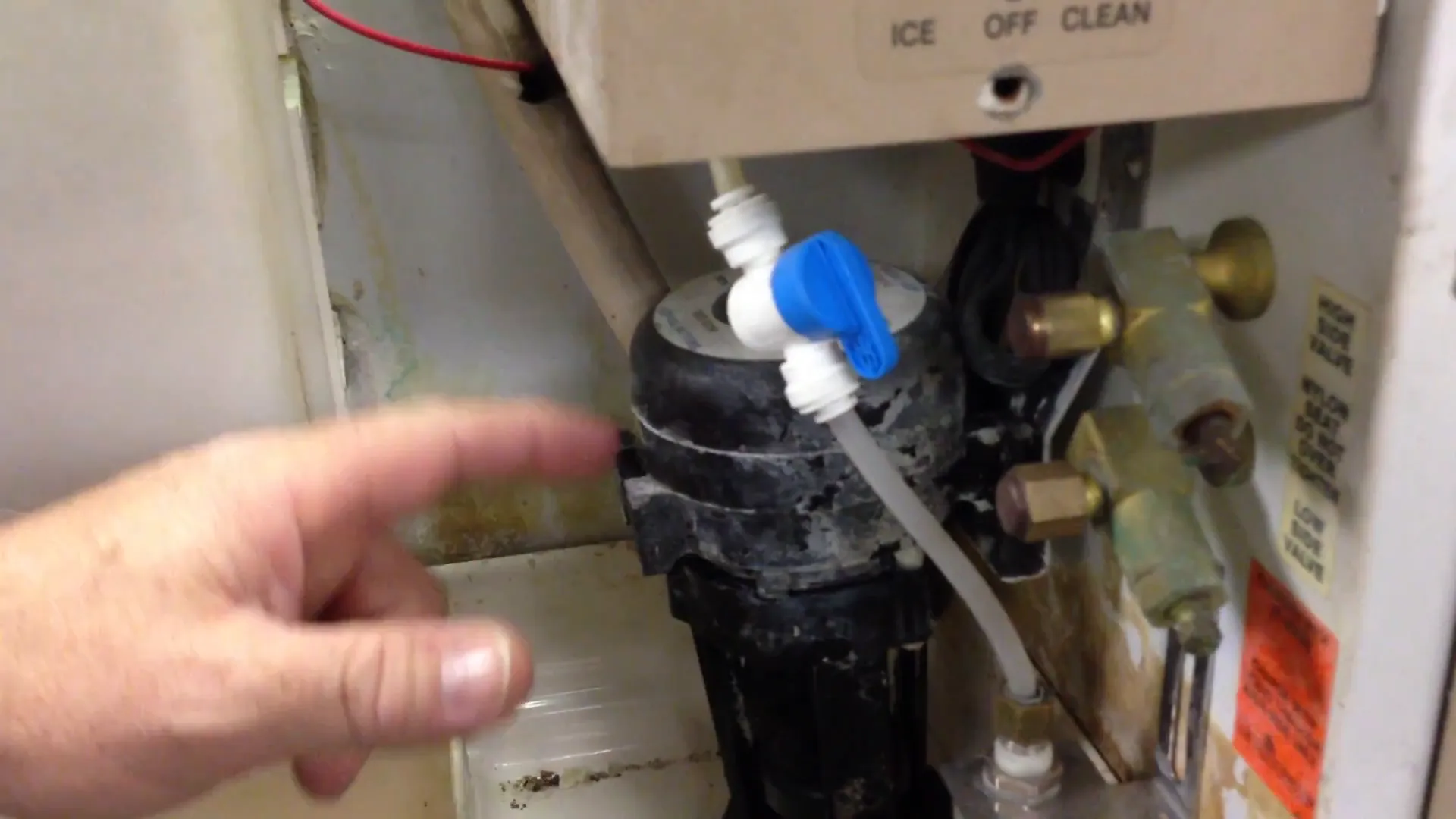
Inspecting Key Components
Take a close look at the water distribution tubes and other internal parts. If they appear caked with deposits, it’s a clear indicator that the machine needs attention.
Consequences of Neglecting Cleaning
Failing to keep an ice machine clean can lead to several serious consequences. Not only does it affect the quality of the ice produced, but it can also lead to equipment failure.
Health Risks
Without regular cleaning, mold and bacteria can thrive in the wet environment of the machine. This can pose significant health risks to customers and employees, leading to potential food safety violations.
Operational Efficiency
Neglected machines often struggle to produce ice efficiently. The buildup of minerals can clog up the system, leading to increased energy consumption and higher operational costs.
Increased Repair Costs
Long-term neglect can result in extensive damage that requires costly repairs. Regular maintenance can help avoid these expensive fixes and extend the lifespan of the equipment.
Frequency of Cleaning Based on Usage
Determining how often to clean an ice machine largely depends on its usage. For general business operations, a cleaning schedule every six months is typically sufficient. However, establishments that produce a large volume of ice, like breweries, pizza shops, or bakeries, should consider cleaning their machines every 90 days. This is essential as the high moisture levels in these environments can lead to rapid mold growth and mineral buildup.
Why Frequency Matters
Regular cleaning not only maintains the quality of the ice produced but also extends the life of the machine. In high-use environments, neglecting to clean the ice machine can result in significant operational issues, such as decreased ice production and increased energy costs. Establishing a cleaning routine based on usage ensures that the machine continues to operate efficiently.
Cleaning the Air Cooled Unit
The air-cooled unit of your ice machine plays a critical role in its overall efficiency. Dust and debris can accumulate in the unit, obstructing airflow and reducing cooling efficiency. Regular cleaning of the air-cooled unit is essential for optimal operation.
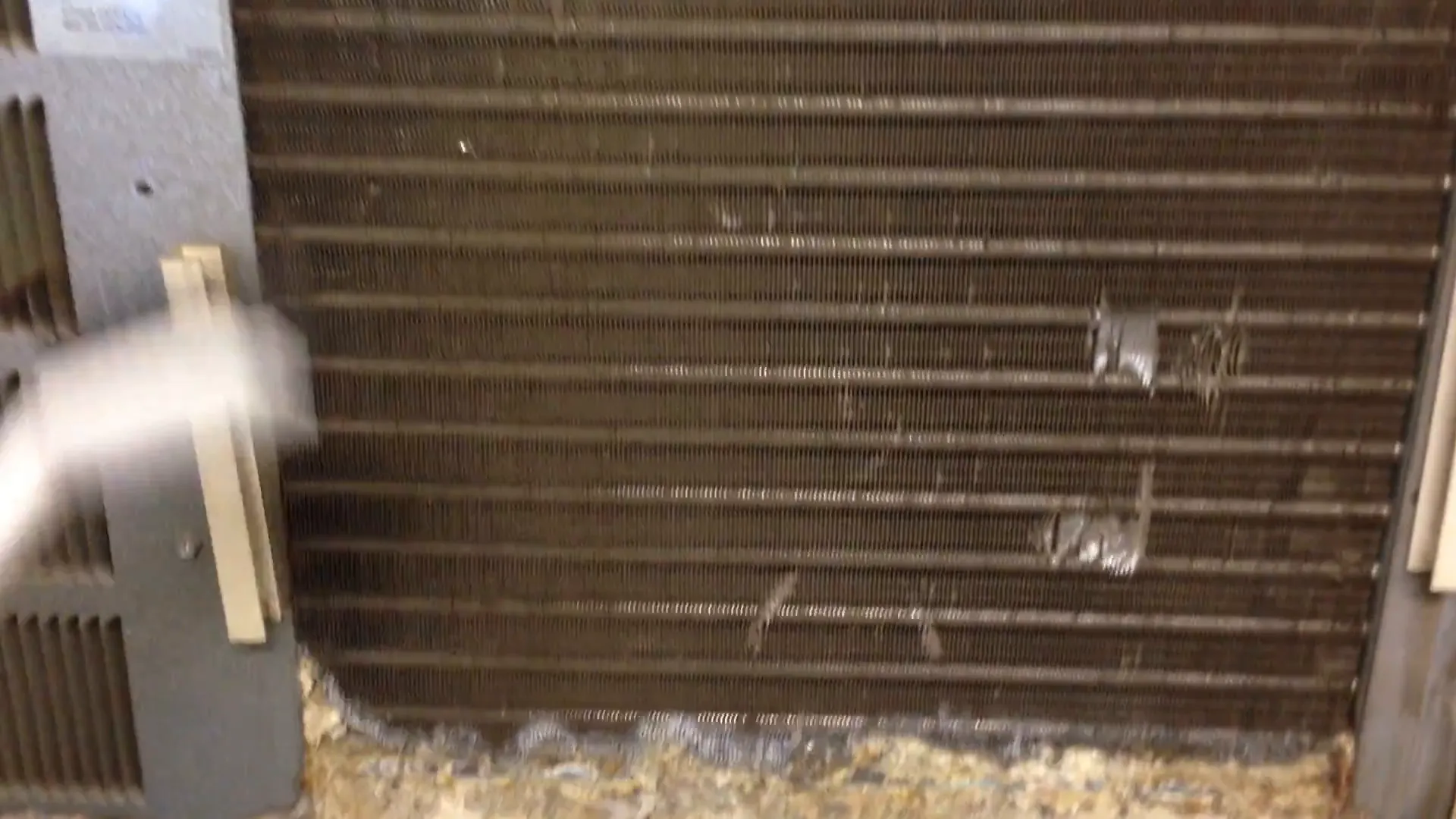
Steps for Cleaning the Air Cooled Unit
- Turn off the ice machine and unplug it for safety.
- Using a soft nylon brush, gently remove any dust or debris from the fins and fan. Avoid using a metal brush, as it can damage the components.
- Check the condensing unit for any signs of wear or damage. If any parts appear corroded, consider consulting EMCO Utah for further assistance.
Cleaning the air-cooled unit not only improves efficiency but also helps prevent breakdowns, ensuring that the ice machine operates smoothly during peak times.
Dealing with Mold and Bacteria
Mold and bacteria thrive in the moist environment of an ice machine, making it crucial to address these issues promptly. Regular cleaning and sanitizing are vital to prevent health risks associated with contaminated ice.
Effective Mold Prevention Strategies
- Use a bleach solution to wipe down areas prone to mold growth, especially underneath the machine and inside the ice bin.
- Ensure proper drainage of water to avoid standing water, which can encourage mold growth.
- Regularly inspect the machine for any signs of mold or bacteria and address them immediately.
Implementing these strategies will not only enhance the safety of the ice produced but also contribute to the longevity of the ice machine. EMCO Utah recommends a thorough inspection and cleaning schedule to mitigate these risks effectively.
Final Steps: Triple Flushing the Machine
After the cleaning cycle is complete, it’s essential to perform a triple flush of the ice machine. This step ensures that all cleaning chemicals are thoroughly removed from the system before ice production resumes.
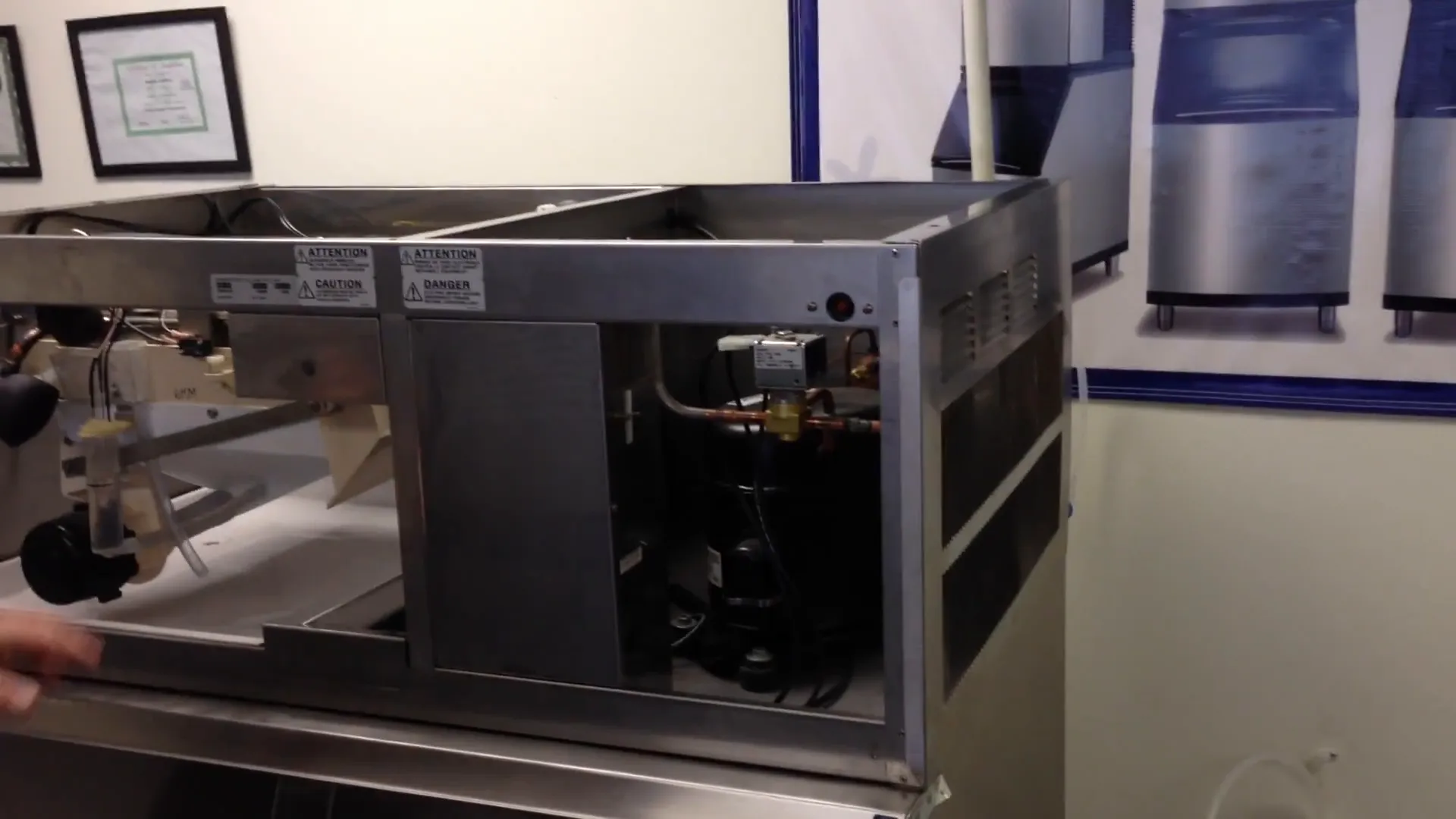
How to Triple Flush
- Switch the machine back to ice-making mode to introduce fresh water.
- Allow the machine to run through its cycle, which will dump the initial batch of water down the drain.
- Repeat this process three times to ensure all cleaning agents are eliminated from the system.
Failing to properly flush the machine can lead to contaminated ice, which poses health risks. This step is crucial, as the caustic cleaner can be harmful if ingested.
Conclusion and Contact Information
Cleaning and maintaining a commercial ice machine is not just about keeping up appearances; it’s vital for health, efficiency, and cost-effectiveness. Establishing a routine cleaning schedule based on usage, addressing mold and bacteria, and ensuring proper flushing after cleaning are all integral parts of effective ice machine maintenance.
For expert assistance in maintaining your commercial ice machine or any HVAC needs, contact EMCO Utah at 435-256-8483. Regular maintenance can save you money and extend the life of your equipment.
FAQ: Common Questions About Ice Machine Cleaning
How often should I clean my ice machine?
Generally, ice machines should be cleaned every six months. However, if your establishment produces a high volume of ice, consider cleaning every 90 days.
What should I use to clean my ice machine?
Use a nickel-safe ice machine cleaner fluid specifically designed for removing mineral deposits. Additionally, a bleach solution can be used to sanitize areas prone to mold growth.
What happens if I don’t clean my ice machine regularly?
Neglecting to clean your ice machine can lead to mold growth, decreased ice production, and potential equipment failure, resulting in costly repairs.
Is it necessary to hire a professional for ice machine cleaning?
While regular maintenance can be performed in-house, hiring professionals like EMCO Utah can ensure thorough cleaning and identify potential issues before they escalate.
